Partners
ICOM Milano 2016 wish to thank all the partners that sustained the various Excursion Day proposals.
10 CORSO COMO
THE ANTONIO PERCASSI FAMILY FOUNDATION
ARCHEOLOGIAINDUSTRIALE.NET ASSOCIATION
Archeologiaindustriale.net was founded in November 2013, its mission is to promote the industrial heritage through the sharing of information and the involvement of industrial heritage experts.
The Archeologiaindustriale.net objectives are:
- Promote the Italian industrial heritage knowledge
- Publicizing foreign experiences, creating connections and possibility of comparison
- Publicizing events, courses, books
- Give visibility to the industrial heritage experts
The Archeologiaindustriale.net Association received a SPECIAL MENTION of the Jury of the European Union Prize for Cultural Heritage / Europa Nostra Awards 2016, Europe’s highest honour in the heritage field.
ARTGLASS
ARtGlass®is focused on the creation of a new dimension of the cultural experience, leveraging on the potential of Augmented Reality and wearable technologies. ARtGlass®believes in a new paradigm able to connect the vast Italian cultural heritage and the audience, in a real time storytelling around art with a strong economic and promotional impact. Born in November 2013 and part of Capitale Cultura Group, ARtGlass® merges managerial personalities with a long international experience in business development, cultural marketing, contents and technology. ARtGlass®, coherently with Capitale Cultura’s philosophy, operates as an active partner of cultural organizations rather than as a traditional software’s provider.
CITY OF CASTELFIORENTINO
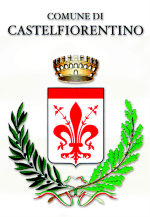
Founded upon a Roman-age settlement, developed along the ancient Via Francigena, Castelfiorentino represents a natural crossroads of the main art cities of Tuscany: Florence, Pisa and Siena. Thanks to its position, that made it come into contact with the Renaissance culture, Castelfiorentino has maintained significant records of its past as well as a relevant art heritage, such as Benozzo Gozzoli’s frescoes held in the new Be.Go Museum, and the works to be found in the Museum of Saint Verdiana. A few steps far from the Museum of Saint Verdiana there is also the Monument to Bottle Crafters, in memory of a female work tradition that was very widespread in this region between the end of the nineteenth century and the early 1960s. In the town’s main square it is possible to visit the People’s Theater, one of the most important nineteenth-century theaters of Tuscany. Going forward by foot, one should stop in front of Membrino, a representative personality of Castelfiorentino placed on the Town Hall’s bell tower, before arriving at the old Walls, where the earliest settlements had origin. Across the surroundings, Castelfiorentino’s hilly territory shows villas and castles of great historic value, such as the Villa di Meleto (Cosimo Ridolfi’s residence as well as venue of the first agricultural school of Italy) and the Castle of Oliveto, a Renaissance-age building dating back to 1424, recently attributed to Filippo Brunelleschi.
CITY OF CERTALDO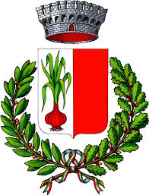
In the heart of the Tuscany, in one of the most scenic landscapes, because of the softness of its hills edged by cypresses, castles and towers, rises Certaldo, rare example of a still intact medieval town, perched characteristically atop a hill. Placed at the boundary between Florence and Siena provinces, it is the ideal staging point to visit the most important artistic spots of Tuscany. The Historical Borgo, also called ‘The Castle’, is bound within the walls, still largely preserved, through which open the ancient town’s access gates: Porta Alberti, Porta del Sole and Porta al Rivellino. The Borgo can be reached by climbing the ancient and evocative steep streets named Costa Alberti and Costa Vecchia, or by the more recent Via del Castello. The sight before the visitor is that of a rare example of medieval urban planning culminating in the imposing Palazzo Pretorio at the top of Via Boccaccio. The upper town, rare example of a still intact medieval Village, was built between the XIIth and the XVth centuries; Certaldo Alto hosts craft shops, taverns, typical restaurants and a museum system which includes Museo del Chiodo, Palazzo Pretorio (The Governor’s Palace), the ancient residence of the vicar with its frescoes, some of them painted by Benozzo Gozzoli, Boccaccio’s house, where you can dive in the life and works of the famous poet. The family of Giovanni Boccaccio (1313-1375) lives here at various times in the house now open to the public as a Museum. In Florence, while transcribing ante’s works, received from Petrarch (hence the saying “the third poet passes to the second the works of the first”), Boccaccio contracts the plague, returns to Certaldo to complete the transcription, and dies here. Certaldo, who was awarded with the Orange Flag prize (Touring Club Italiano) in 2003, thanks to its environment and its accommodation facilities, offers a pleasant, culturally enriching and relaxing stay.
CITY OF GENOA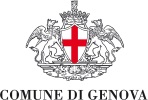

Genoa (590.000 inhabitans) is the sixth Italian city by population and third in Northern Italy. Overlooking the Ligurian Sea and its history is – of course – linked to the navy. Its port is the most important in Italy and the second in the Mediterranean and home to major shipyards. It’ been for over eight centuries the capital of the Republic of Genoa (1096 – 1815) and known by the name of “La Superba” for dominance on maritime trade and on domestic markets. Genoa is a city rich in culture and traditions. It was the birthplace of Christopher Columbus, Niccolò Paganini, Giuseppe Mazzini. Symbol “physical” of the city is its lighthouse – the Lanterna – while it is traditionally represented by the Cross of St. George, the coats of arms supported by two Griffons. Very strong the financial tradition that dates back to the Middle Ages. The ‘Banco di San Giorgio’, founded in 1407, was the first bank in the world and has played an important role in the prosperity of the city from the mid- 1400s. Today, major companies have their headquarters in Genoa by Ansaldo Italian to Costa Crociere. The city is also an important center at international level in education and research. Some examples are the University of Genoa, the Conservatory Niccolò Paganini, the Italian Institute of Technology. He has also medical excellence as the Istituto Giannina Gaslini (children’s hospital) and the Hospital San Martino.
CITY OF TURIN

First capital of Italy, Turin is the main administrative centre of the Piedmont region; it covers an area of 130,166,000 square meters and resides at an elevation of 239 meters. The number of residents at the end of 2015 was 892,276 aged 46 on average. The City of Turin is a complex machine: many of the services that residents enjoy are directly offered by municipal offices, while others are carried out by companies of which the Municipality holds a share of property or by associations and foundations established for the realization of common goals with those of the City. Turin is a city in constant evolution: from Augusta Taurinorum (27 a.C.) to the capital of the Savoy Dukedom, (1563) until becoming Italy’s first capital (1861), the queen of the automobile industry (1899) and the star of the 2006 Winter Olympics. A city that is just waiting to be discovered in all of its many aspects: filled with historic evidence, acclaimed museums, works of contemporary art en plein air, cultural events, with its characteristic arcades, renowned historical meeting places, spacious parks and magic places.
CRESPI D´ADDA ASSOCIATION
Associazione Crespi d’Adda is a no profit and political free entity. Its mission is to bring together people who not only live in Crespi d’Adda but that love this amazing place on Earth. Our commitment is the common passion for our history, culture and beauty and we tell passionate our heritage to those who will visit us because, however far we go, this is where we learned to walk. We are indebted to this place of dream and we have to work for developing a more sustainable tourism with the deep involvement of its inhabitants. We would love to blow a new soul in the ancient town: to retransform it in a place of action where wander tourists with meeting spaces as well as a welcoming community can welcome visitors, even telling all from the mouths of residents. We are all working on this, as faithful sentinels of the past, to prevent that “Crespi d’Adda returns to the same chrysalis cocoon from which, many years ago, it came out as a butterfly.”
CULTURA DOMANI
ELESTA TRAVEL
Elesta Travel is a team of Italian journey designers based in Milan. We offer an unforgettable experience of Italy, unveiling the beauty of a country with glorious landscapes and a magnificent past, opening the door to many hidden places and treasures that lie off the beaten track. With a community of collaborators that combine competencies in art, culture, and history, we help you, the discriminating traveller, to explore your interests and realise your passions, guiding you through Italy’s varied and matchless cultural heritage.
ENEL
FIRENZE CONVENTION & VISITORS BUREAU
Firenze Convention & Visitors Bureau is the official partner of the Municipality of Florence operating since 1995 as destination promoter of the city. It is a tightly-knit highly professional network of almost 200 members able to connect local and central governmental offices and administrations, private firms and cultural institutions. As a nonprofit consortium, FCVB aims exclusively at increasing quantity, quality and scientific importance of events held in the city. Our numerous partnerships and premium relationships with hotels, conference facilities, local professional organisers, locations and event suppliers, allow us to provide the most efficient and incisive action. FCVB is capable of sourcing the best existing rates for all venues and any kind of service, and offers unique contracting facilitations, providing event planners with a vast array of cost and time-effective solutions. “Tuscany for weddings” is the FCVB division that supports the clients in wedding organization helping them to find the best rate venue and any service they need for a Catholic, Civil, Jewish, Protestant, Symbolic wedding or vows renewal in Florence.
www.conventionbureau.it
FONDAZIONE BRESCIA MUSEI
Established in 2003, Fondazione Brescia Musei runs a varied and exciting complex of museums which includes the Santa Giulia Museum, UNESCO site since 2011 with Brixia – Archaeological Park of Ancient Roman Brescia (the largest archaeological park in northern Italy), the Tosio Martinengo Gallery, currently undergoing important renovation work, the Castle with the Luigi Marzoli Weapon Museum and the Risorgimento Museum, and the Nuovo Eden cinema-multimedia hall, part of a prestigious plan for urban regeneration in Brescia’s Carmine quarter.
Santa Giulia Museum
From Roman houses to Renaissance architecture, Santa Giulia tells the fascinating story of over two thousand years of history. Santa Giulia Museum, unique in its design and location and with display areas covering 14,000 square meters, offers a journey through Brescia’s history, art and spirituality from prehistoric times to the present day.The Benedictine convent of San Salvatore-Santa Giulia was founded in 753 by the Longobard king Desiderius and his wife Ansa and occupied a role of great religious, political and economic importance, which continued after the Longobards’ defeat by Charlemagne. According to tradition, the dramatic story of Ermengarda, daughter of Desiderius and rejected bride of the Frankish emperor, was played out here; it was recounted by Manzoni in his tragedy Adelchi. The site is composed of parts from many different epochs: a stratification of memories and a continual source of unexpected discoveries. The complex was built on the ruins of impressive Roman town houses and includes the medieval church of San Salvatore and its crypt, the Romanesque Santa Maria in Solario, the Nuns’ Choir, the sixteenth-century church of Santa Giulia and the monastery cloisters. The Museum’s special distinguishing feature is the close relationship between the historic buildings and the objects on display, which number about 11,000 and include Celtic helmets and horse harness ornaments, Roman marble and bronze sculptures, Longobard items, grave goods, frescos and artefacts dating from the 3rd millennium BC to the 16th century AD. Furthermore, the Museum features a 1200 square meter exhibition area available for temporary exhibitions, equipped with the most advanced conservation systems. The complex of San Salvatore-Santa Giulia, with the nearby archaeological area of Capitolium, belongs to the site The Longobards in Italy. Places of Power (568–774 AD) that was inscribed upon the UNESCO World Heritage List on June 25, 2011. The serial property comprises seven groups of important buildings (including fortresses, churches, and monasteries) throughout the Italian Peninsula.
FONDAZIONE CASSA DI RISPARMIO DI FIRENZE
The Fondazione Cassa di Risparmio di Firenze (FCRF) is a foundation with banking origins. Its history goes back to 1829, when a group of 100 citizens decided on their own initiative to set up a company called the “Società della Cassa di Risparmio”. The purpose of the company was to encourage saving and a prudential approach to money among the less affluent. Continuing in the footsteps of the original Cassa, today the FCRF pursues its statutory aims by operating in Tuscany with a particular attention towards the territory of Florence and the areas in which the bank has traditionally operated. The FCRF operates directly through its own projects or through operating entities or by making contributions to initiatives proposed by third parties that pursue objectives aligned with its own statutory and programmatic aims; it also operates through invitations to tender. The performance of its activity is directed in particular towards fostering culture and art, conserving and enhancing the cultural, landscape, environmental and agricultural heritage, furthering scientific research and technological innovation even in the medical and health field and the education of young people. It also supports voluntary work and associations and is committed to helping those in need of solidarity, care and rehabilitation.
FONDAZIONE ITALIANA ACCENTURE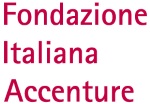
Fondazione Italiana Accenture is a not-for-profit organization. Founded in 2002, its mission is to foster social innovation by promoting and supporting projects that deliver real benefits to society in terms of social cohesion and sustainable economic development. One of its main objectives is to bring value to local territories by exploiting their artistic and cultural heritage.
FONDAZIONE MILANO
FONDAZIONE TEATRO DEL POPOLO CASTELFIORENTINO
Fondazione Teatro del Popolo is a cultural institution that has as its purpose the promotion of culture and art, especially in the fields of theater, film, music, dance, the visual arts and cultural heritage. Established at the initiative of the City of Castelfiorentino and Banca di Credito Cooperativo di Cambiano (Castelfiorentino – Florence), has no profit and its business is the management and use of the Castelfiorentino People Theatre, the only theater nineteenth remained in Val Florentine d’Elsa, done theater seasons program, music and film. Since 2012 has the direct management of Bego Benozzo Gozzoli Museum, which cure all the activities and exploitation.
THE FOOD MUSEUMS OF THE PARMA PROVINCE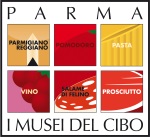
The Food Museums of the Province of Parma, distributed over the territory of the Italian “Food Valley”, is made up of a collection of six different sites dedicated to telling the history, culture, traditions and processing technologies of the most important food products of the Parma area: Parmesan Cheese, Pasta, the Tomato, the Wine of the Hills of Parma, Salame of Felino, and Prosciutto of Parma. Founded in 2003 along the “Road of Taste” which crosses the valley from the Po River to the Appennine mountains, the museums welcome an average of twenty thousand visitors every year. Information, calalogue and materials can be found on our website: www.museidelcibo.it
IBC – Istituto per i beni artistici culturali e naturali 
The Istituto per i beni artistici, culturali e naturali (IBC) of the Region Emilia Romagna was founded in 1974 to support and advise the Regional Government in policy making and to act as an advisory body to local authorities in the field of cultural heritage. IBC’s activities with regard to heritage and museums include: research, documentation, renovation of museums and development of temporary exhibitions, definition of methodologies for conservation, funding of restoration projects, setting of museum standards, training of professionals, development of public services and educational activities, publishing, etc. IBC is very active at national and international level, and networks with organisations such as ICOM, European Museum Forum, European Museum Academy, NEMO – Network of European Museum Organisations, to improve the quality of heritage and museum provision and the qualification of staff.
inLombardia
Explora is the official Destination Management Organization (DMO) of the Lombardy Region, Milan’s Chamber of Commerce and, with the assistance of Unioncamere Lombardia, all the Chambers of Commerce in the Region at the service of local businesses and territories. Its main function is that of promoting Lombardy’s entire tourism repertoire with the inLOMBARDIA brand, an innovative and flexible model that distinguishes itself with a strong digital presence. Explora takes on the specific task of guiding tourism promotion strategies towards national and international markets in complete harmony and synergy with local institutions and trade associations. Explora assists the Lombardy Region, the Lombard commerce chamber system and local territories in order to:
- Promote destinations and territories with a “federal” organization model
- Set up a consistent collaboration with local businesses
- Provide useful instruments to both businesses and territories
- Promote the region’s touristic and experiential attractions from a market standpoint
- Advertise the wonders of Lombardy with a single umbrella brand.
Explora guides the marketing and promotion activities of a given destination, working closely with every stakeholder in order to provide greater emphasis on singular initiatives with the purpose of creating a joint promotion system that is both comprehensive and effective.
ITALIA NOSTRA
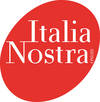
Italia Nostra was born on 29 October 1955 as the first Italian Cultural and Environmentalist Association committed to the defense of the Italian historical, artistic and natural landscapes and heritage. The voluntary activities of the Association helped spreading in Italy the “culture of conservation” of the urban and rural landscape, of the monuments and of the urban livability. The cultural heritage, the environment, national parks, historic centers, the development models, the agriculture, the sea, the coast, the islands, the urban and territorial planning, transportation network, the energetic isssue, museums, libraries, historical archives: these are some of the most important themes supported by Italy Nostra and its extensive researches and documentation, that today represents a unique and irreplaceable heritage for the whole Country. Italia Nostra has over 200 sections on the national territory and over 11,000 members.
MUMAC (Coffee Machine Museum)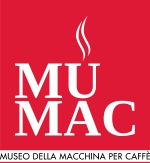
MUMAC is the museum of professional espresso coffee machines created by Cimbali Group. Inaugurated by Cimbali Group in 2012 to testify to the value of the company over the years and to what it owes to the local area, MUMAC can be found in Binasco, just outside Milan, within the company’s headquarters. MUMAC comprises both MUMAC – the Coffee Machine Museum – and MUMAC Academy.
MUMAC, The Museo della Macchina per Caffè (Coffee Machine Museum) is the first museum entirely dedicated to professional coffee machines, featuring 250 items (100 of which are on display) from the Maltoni and Cimbali collections. MUMAC Academy offers training designed to meet a wide range of market requirements, including tasting & sensory courses, to evaluate specific qualities in different coffees. The Academy is open to everyone, from business professionals to coffee lovers & aficionados.
MUSEIMPRESA ASSOCIATION
Museimpresa – Italian Archives and Company Museums Association, was born in 2001 with the aim to promote the cultural initiatives of the companies, through the valorisation of the museum and the company’s archive. Within this field it is committed to the exchange and diffusion of experiences and knowledge with the museum community, the companies, the institutions and the public. In addition, it invests on research, formation and development of company museums and archives. Museimpresa is also involved with the development of the awareness of the Italian companies on these issues and to increase their contribution to the creation of a national cultural awareness, in free and open cooperation with all the other social components and institutions of the country.
MUSEO DI STORIA NATURALE DELL’UNIVERSITÀ DI FIRENZE, FLORENCE
With ten million specimens and over four centuries of history, the Natural History Museum of the University of Florence is the most important natural history museum in Italy and one of the largest in the world. It includes eight departments that are housed in various historical buildings in Florence: Anthropology & Ethnology, Biomedicine, Botany, Chemistry, Geology & Paleontology, Mineralogy, Botanical Garden, and Zoology. All the collections are actively studied, conserved, expanded, and exhibited in order to disseminate this extraordinary heritage of scientific and historical knowledge. The spirit of the Renaissance, which marked the beginning of the Modern Age and produced an effective synthesis between science and art in Florence, still animates the Museum, where the boost to innovation is combined with the wish to maintain ties with tradition.
www.msn.unifi.it
MUSEO FIRST – FIRENZE SCIENZA E TECNICA, FLORENCE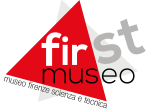
The Museo FirST –which is managed by the Fondazione Scienza e Tecnica– preserves the scientific collections of the Istituto Tecnico Toscano, the Arts and Craftsmanship School founded in 1850 by Grand Duke Leopold II with the aim of training a new class of technicians capable of promoting industrialization and the modernization of agriculture in Tuscany. Between 1850 and 1914 the collections of the Istituto were constantly increased until they included a large number of scientific instruments, natural specimens, samples of raw materials, and manufactured goods. Since the mid-1980s the collections have been reordered, restored and catalogued. Today they are partially displayed to the public. Of particular interest is the 19th-century physics cabinet, one of the richest and better preserved in Europe. The Museo FirST houses a planetarium and a research library. Visitors –both adults and children– can also enjoy a series of educational activities and cultural events.
www.museofirst.it
MUSEO GALILEO–ISTITUTO E MUSEO DI STORIA DELLA SCIENZA, FLORENCE
The Florence Museum of the History of Science has been housed in the historic Palazzo Castellani since its foundation in 1930. On June 2010, after a two-year closure due to important renovation works, it re-opened to the public under the name “Museo Galileo”. The new name highlights the major role played by Galileo’s heritage both in the museum collections and research. In 2010 Museo Galileo was awarded with the first prize of the ICOM-Italy Museums of the Year Prize, Best Management section. Museo Galileo owns one of the world’s most important collections of scientific instruments which gathers over 5000 items dating from the 11th to 19th centuries—about 1000 of which are on permanent display. Thanks to its research institute and special library, Museo Galileo operates in many different fields within the history of science and technology, that is research, documentation, publishing, advanced training, dissemination of scientific culture, organization of events, conferences and temporary exhibitions. Museo Galileo has recently delivered a free app for smartphones and tablets that offers an immersive tour of the entire collection.
www.museogalileo.it
PIRELLI FOUNDATION
It was the awareness that preserving the cultural, historic and contemporary heritage of the Group is of huge value, not just for the company itself but also for the community and for the land in which it operates, that led to the creation of the Pirelli Foundation in 2009. Set up on the initiative of the company and of the Pirelli family, the Foundation is based in a renovated 1930s palazzo,which contains the Historical Archives, the private Archive of the Pirelli family and a technical and scientific Library. Its mission includes the preservation of the company’s historic heritage and the promotion of its corporate culture through exhibitions, conferences and cooperation with other cultural institutions.
The Pirelli Foundation works to safeguard the Group’s historical heritage (with restoration and repair operations) as well as creating the instruments needed to facilitate its use. These include inventories and research publications, interactive technological instruments, exhibitions, guided tours of the exhibition spaces, and conferences and seminars, also with the collaboration of other cultural institutions. Opening up the various collections in the Archive provides both the opportunity and the inspiration for exhibitions that are periodically set up in the premises of the Foundation or of other institutions.
The Pirelli Foundation organises also a lavish programme of educational and creative courses for each school year. Designed for schools and institutions of different orders and levels, its prime objective is to introduce the young to the world of production and work, illustrating the values that constitute the bedrock of Pirelli’s corporate culture.
PRIVILEGIO – SALONI DELLE FESTE
Saloni delle feste is a location rich of prestige, the important frame for your happening in the historical center of Genoa. Saloni delle feste is located in the heart of the historical center of Genoa, in the lovely rooms on the second floor of “Imperiale Palace”, near the Old Port and the Doge’s Palace and is directly connected, by the will of the Imperiale family, to the Cathedral of San Lorenzo. The Imperiale Palace is one of the most prestigious buildings in the city. One of the signs of its importance and majesty is his inclusion in the “Palazzi dei Rolli” circuit, where, between the ‘500 and ‘600, were housed popes, princes and members of royal families. The palace was built around 1560 by the will of Vincenzo Imperiale, designed by Giovanni Battista Castello called the Bergamasco, who took care not only of the architectural structure, also part of the frescoes with Luca Cambiaso, great Genoese painter of the same period. It’s a location of 850 sqm specialized in organization of various events, such as weddings, parties, ceremonies, openings, art exhibitions, conferences and culinary courses. In addition to organizing parties, we are particularly efficient in organizing: Art exhibitions, conferences, presentations, business meetings, openings, galas, concerts.
PROPOSITURA DI CERTALDO
The rectory of St. Thomas is the main church of the town of Certaldo, in the province of Florence: it is located in the central square Boccaccio, on which also overlooks the Town Hall. It was inaugurated in 1885, although the works for its construction began in 1840. Its architectural structure is a virtuous work of Sacred Art that, despite the simplicity, contains a lot of important elements. There are many polychrome glass windows that can be admired. The first church of certaldo was the Church of Saints Jacopo and Filippo located in Certaldo Alto. The complex of the Rectory of Saints Jacopo and Filippo has an important role still today and includes within it: the Church, the Convent, the Cloister, the garden and the basements. The Convent, is today as the Museum of Sacred Art, in which there are unique religious works from the Ecclesiastical Vicariate of Certaldo.
TOURING CLUB ITALIANO
Touring Club Italiano is a non-profit organization that has been operating in the fields of tourism, culture and environment since 1894. All 300.000 members are the hearth and strength of the Association which operates in order to:
– develop safe and sustainable tourism;
– promote and preserve Italy’s cultural and natural heritage;
– educate about countries and culture;
– develop initiatives focused on accompanying travelers during their journeys to discover Italy’s hidden treasures.

The project “Aperti per Voi” (Open for You) is an initiative that protects and promotes Italy’s cultural heritage, thanks to the support of over 2000 volunteers who commit their time and passion continuously to keep art venues open that would otherwise be closed to the public. Since 2005, they have welcomed over 8 million visitors to museums, churches, historic palazzi and archeological areas in many different Italian cities.
TRAME DI LUNIGIANA
Trame di Lunigiana, a project conceived and run by social enterprise Trame Territoriali, aims to promote Lunigiana and its Castles, establishing the tourist-cultural resources of this extraordinary territory. Thanks to a collection of regular, tailored tours in the region and together with a network of passionate professionals and tourist accomodations, Trame di Lungiana offers certified services and quality. Lunigiana is one of the less frequented routes in Italy, it is a boundary land, between Tuscany, Liguria and Emilia Romagna. It is a territory of prehistoric idols, medieval castles, intact hamlets and culinary heritage. From the fishermen’s villages on the beautiful Poet’s Gulf to the peaks of the Apuan Alps and the Apennines, Lunigiana is a real journey!
TRAME DI MONFERRATO
Trame di Monferrato is committed to promoting the territory of Monferrato by bringing out the best of its amenities, resources and operators. Trame di Monferrato provides quality services to visitors who wish to explore the many hidden treasures of this magnificent enclave with its rolling hills, ancient castles, local wines and culinary delights. Nestled between the provinces of Alessandria and Asti in Italy’s north western region of Piedmont, Monferrato is renowned for its breathtaking landscape and traditional vineyards. Today, it is listed as a UNESCO World Heritage site. Two ruby red wines which are famous the world over, Barbera and Grignolino, are produced in the local vineyards and are protected by Italy’s prestigious “DOC” quality assurance label. The area is also home to two world-famous food products: truffles and hazelnuts. Undulating landscapes, great wine, fabulous food and an abundance of castles await your visit in Monferrato.
TURISMO TORINO E PROVINCIA

Turismo Torino e Provincia is the Convention & Visitors Bureau for the city of Turin and its provincial territory. Created from the merging of ATL1 “Turismo Torino”, ATL2 “Montagnedoc” and ATL3 “Canavese e Valli di Lanzo” in 2007 and by incorporating the Torino Convention Bureau in 2010, it is the organisation for promoting the province of Turin as a tourist destination for leisure, sport, nature, culture, individual and group trips, conferences, conventions, incentive travel and business travel.
VILLA REALE DI MONZA
